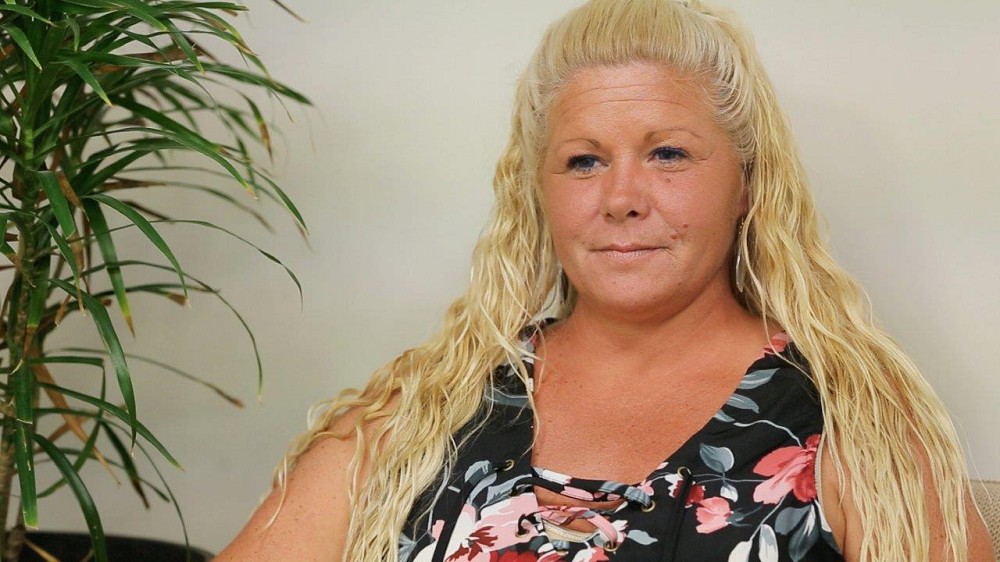Kaleen’s Story: Moving Through the Transitions of Care
by the North West Local Health Integration Network
 Kaleen’s story – moving from first responders, to local hospital, to regional hospital, to rehabilitative care and finally back home – is a living example of transitional care.
Kaleen’s story – moving from first responders, to local hospital, to regional hospital, to rehabilitative care and finally back home – is a living example of transitional care. In November of 2015, Kaleen Torbiak fell 100 feet into a flooded mine on the Atikokan snowmobile trails. There, she spent three nights with a broken leg and fractured skull before being found by Search and Rescue.
Kaleen was taken to the Atikokan General Hospital, where she was then transferred immediately to Thunder Bay Regional Health Sciences Centre. Suffering from severe frost bite and the beginning stages of kidney failure, doctors were forced to amputate both of Kaleen’s legs from the knees down.
Following the procedure, she spent several days recovering in hospital before being transferred to St. Joseph’s Care Group for rehabilitative care. Kaleen spent two months at St Joseph’s, including a transfer to St Joseph’s Heritage, before eventually moving back home.
Kaleen’s story – moving from first responders, to local hospital, to regional hospital, to rehabilitative care and finally back home – is a living example of transitional care. Transitional care refers to the coordination and continuity of health care as a patient moves from one care setting to another. If done correctly, the process should be seamless. Kaleen’s smooth transition from one care setting to another, and the quality care she received along the way, made her life changing experience a little less stressful.
Kaleen spent her initial days at St Joseph’s Care Group with the Amputee Clinic. There, a team worked to stabilize Kaleen and help her re-learn basic functions. It was decided that Kaleen continue to receive rehabilitative services in Thunder Bay, before moving back to Atikokan. Kaleen was sent to St. Joseph’s PR Cook Apartments, where she was able to stay until she healed enough to go home. She spent her days working with an Occupational Therapist (OT) at St. Joseph’s, and her evenings and nights living independently with supports at the PR Cook Apartments.
An occupational therapist worked with Kaleen to help rebuild her strength and balance.
“They taught me everything at the amputee program at St Joseph’s,” says Kaleen. “Before you go home, they actually come into the bathroom with you to make sure that you are using it properly – that you aren’t going to fall and hurt yourself. They took me outside…to press the buttons at the street lights, to wait, cross the street, press the button again, and come back. They took me out grocery shopping to show me properly how to put my cane into the grocery cart, how to reach up and grab things off of the selves. They taught me how to get up off the floor with my legs on, with my legs off. It’s amazing what they teach you.”
After getting the care she needed, Kaleen is now back at home living independently and enjoying the activities that brought her joy before her accident, including hunting, fishing, kayaking and swimming. She continues to visit Thunder Bay on a monthly basis for checkups and will be receiving her final set of prosthetic legs in the near future.
What made her experience through the transitions of care so enjoyable? “The smoothness of how everything went,” recollects Kaleen. “It was very easy. It wasn’t a stressful situation going from the Regional Hospital to St. Joseph’s. That transition was very nice. And then from there to St. Joseph’s Heritage, and then from St. Joseph’s Heritage to home. The transition was great. The OT made sure I had everything I needed for when I got home from my home care. So I still had someone around at all times to help me shower, or with my laundry, or anything along those lines. And I do still have personal attendants on a daily basis that come to my house.”
In addition to the smooth transition through various levels of care, Kaleen was impressed with the patient-centeredness of the care she received. At the amputee clinic, Kaleen was involved in meetings with her whole care team – her Physiotherapist, Occupational Therapist, Amputee Doctor, Amputee Counsellor, and Prosthetist – where she was included on her care plan and given opportunities to choose the options best for her. “I was right in the centre. I went into that room and I didn’t expect my whole team to be there. That was the most amazing experience because they kind of just put me in the middle of them. I unwrapped my legs, I talked to them, and then the whole room went around and all gave their input. Then they came back to me, asked me again, and then they would give their input again.”
Kaleen’s experience has given her a passion for helping others in a similar situation. “I never noticed how many amputees we have in Thunder Bay alone until I became one,” said Kaleen. “There were absolutely no support groups in all of northwestern Ontario for amputees. So I decided to start an amputee support group – it’s called Northwestern Ontario Amputee Support Group.” Kaleen’s support group has gained 46 members since she started it back in April. The group meets once a month to share experiences and provide peer support.
Kaleen’s story is an excellent example of how the programs and services in the North West LHIN worked together at the system level for the patient.